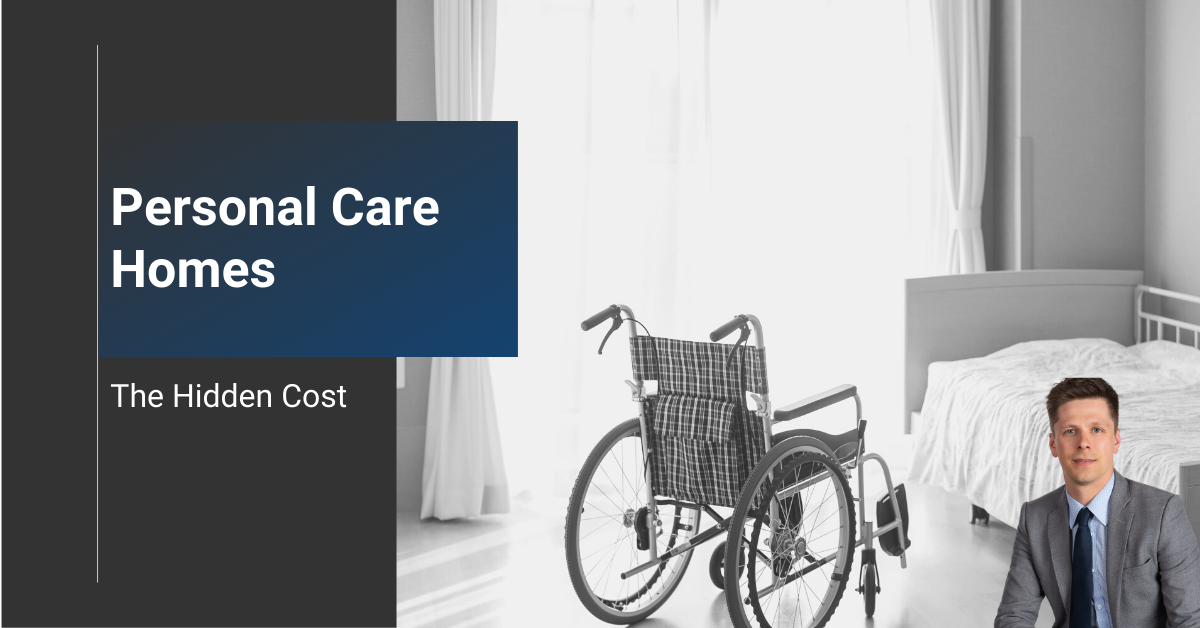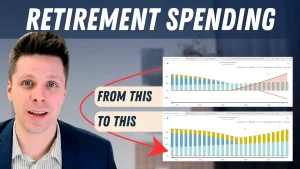[vc_row css=”.vc_custom_1612380408194{padding-top: 20px !important;padding-bottom: 20px !important;}”][vc_column][vc_column_text]As I’ve outlined in the past (Die with Zero), I’m an advocate for spending more in retirement and enjoying life while you’re healthy enough to do so.
I also believe in aggressively drawing down taxable accounts such as RRSPs and RRIFs (RRSP Tax Bomb) to potentially avoid a significant tax bill upon death.
Today, I’m going over another reason you should believe in this line of thinking.
Personal Care Homes
As much as we don’t want to think about it, we may end up in a personal care home one day. Fair or not fair, the cost of living in a personal care home is based on your income.
And just because you are paying more than the person in the room beside you doesn’t mean that you’ll be receiving steak dinners every night. Your services will actually be the exact same.
How much will it cost?
For an individual in Manitoba, if your net income is below $18,857, you will pay the lowest daily rate of $39.50 per day. As your net income rises, so does your daily cost which maxes out at $95.20 per day once your net income is above $39,188
*View current rates here or calculate your cost through this calculator
As you can see, someone with a high income is paying nearly three times as much as someone with a low income for the exact same services.
Disposable Income
Ordinarily, having a higher income should provide you with more disposable income to spend on yourself. Since the cost of personal care homes is based on net income, this advantage is negated.
Bob has a net income of $18,857; after paying the personal care home, he is left with $4,440 or $370 per month to spend on himself.
[$18,857 – (365 days x $39.50 daily rate)] = $4,440 per year
Diane’s net income is $39,188; she’s left with the same amount of disposable income as Bob after paying the care home.
[$39,188 – (365 days x $95.20 daily rate)] = $4,440 per year
How to reduce your income
Since there’s no advantage to having a high income, it’s beneficial to keep it as low as possible to pay less for your care.
There isn’t much you can do if you’re receiving pension income (Work pension, CPP, OAS), but you’ll want to keep your withdrawals from your registered savings accounts as low as possible once in a care home.
The best way to do this is to aggressively withdraw funds from your RRSP or RRIF before you enter a care home.
Let’s assume in the previous example that Bob and Diane were in identical financial situations when they retired.
Bob decided to enjoy his retirement savings and aggressively drew down his RRSPs and RRIFs to pay for travel and to maximize his TFSA. By the time Bob entered a care home, he no longer had any funds in his taxable registered accounts.
On the other hand, Diane only began withdrawing the minimum required amount from her RRIF once she turned 71. When she entered a care home, she still had a significant amount left in her RRIF. As you get older, the minimum withdrawals from a RRIF grow, thus further increasing Diane’s taxable income.
Once in a care home, both are left with the same amount of disposable income, so which retirement would you rather have?
[/vc_column_text][/vc_column][/vc_row]






